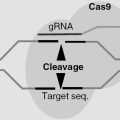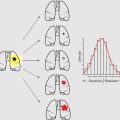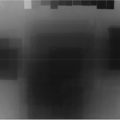12
CELL KINETICS
MATTHEW C. WARD AND RICHARD BLAKE ROSS
Question 1
What are cyclin-dependent kinases (Cdks)? How are they related to cyclins?
Question 3
At which checkpoint are p53 and Rb most relevant?
Question 1 What are cyclin-dependent kinases (Cdks)? How are they related to cyclins?
Answer 1
Cdks are enzymes that regulate the cell cycle. Cdks complex with cyclins (labeled A–H), which are proteins. The activation of a cyclin protein by a Cdk will allow the cell to progress through the cell cycle. While Cdk levels are constant throughout the cell cycle, cyclin levels vary based on the cell cycle phase.
Hall EJ, Giaccia AJ. Cell, tissue and tumor kinetics. In: Hall EJ, Giaccia AJ, eds. Radiobiology for the Radiologist. 7th ed. Philadelphia, PA: Lippincott Williams & Wilkins; 2012:372–390.
Question 3 At which checkpoint are p53 and Rb most relevant?
Answer 3
The purpose of a cell’s checkpoint is to check for errors prior to initiating the next step of the cell cycle. The proteins p53 and Rb are keys within the G1 checkpoint whose purpose is to detect DNA damage prior to initiating DNA synthesis. p53 also mediates the G2/M checkpoint.
Hall EJ, Giaccia AJ. Cell, tissue and tumor kinetics. In: Hall EJ, Giaccia AJ, eds. Radiobiology for the Radiologist. 7th ed. Philadelphia, PA: Lippincott Williams & Wilkins; 2012:372–390.
Question 5
What is the labeling index (LI) and how is it calculated?
Question 7
Which phase of the cell cycle is the most variable and accounts for the majority of variation in cycle times between malignant and benign cell lines?
Question 5 What is the labeling index (LI) and how is it calculated?
Answer 5
The LI is used to determine the length of time required for a cell to pass through the S phase of the cell cycle. It is calculated by “flash labeling” cells with 5-bromodeoxyuridine and counting the proportion of cells that are labeled. The formula:
![]()
can be used to calculate the duration of the S phase (Ts) of the cell cycle.
Hall EJ, Giaccia AJ. Cell, tissue and tumor kinetics. In: Hall EJ, Giaccia AJ, eds. Radiobiology for the Radiologist. 7th ed. Philadelphia, PA: Lippincott Williams & Wilkins; 2012:372–390.
Question 7 Which phase of the cell cycle is the most variable and accounts for the majority of variation in cycle times between malignant and benign cell lines?
Answer 7
The G1 phase is highly variable whereas S, G2, and M are fairly consistent across cell lines.
Hall EJ, Giaccia AJ. Cell, tissue and tumor kinetics. In: Hall EJ, Giaccia AJ, eds. Radiobiology for the Radiologist. 7th ed. Philadelphia, PA: Lippincott Williams & Wilkins; 2012:372–390.
Question 9
What is the growth fraction (GF)?
Question 11
How is the cell loss factor defined?
Question 9 What is the growth fraction (GF)?
Answer 9
The GF is defined as the fraction of cells proliferating. Although highly variable, the typical GF for cancerous cell lines is between 30% and 50%.
![]()
Hall EJ, Giaccia AJ. Cell, tissue and tumor kinetics. In: Hall EJ, Giaccia AJ, eds. Radiobiology for the Radiologist. 7th ed. Philadelphia, PA: Lippincott Williams & Wilkins; 2012:372–390.







